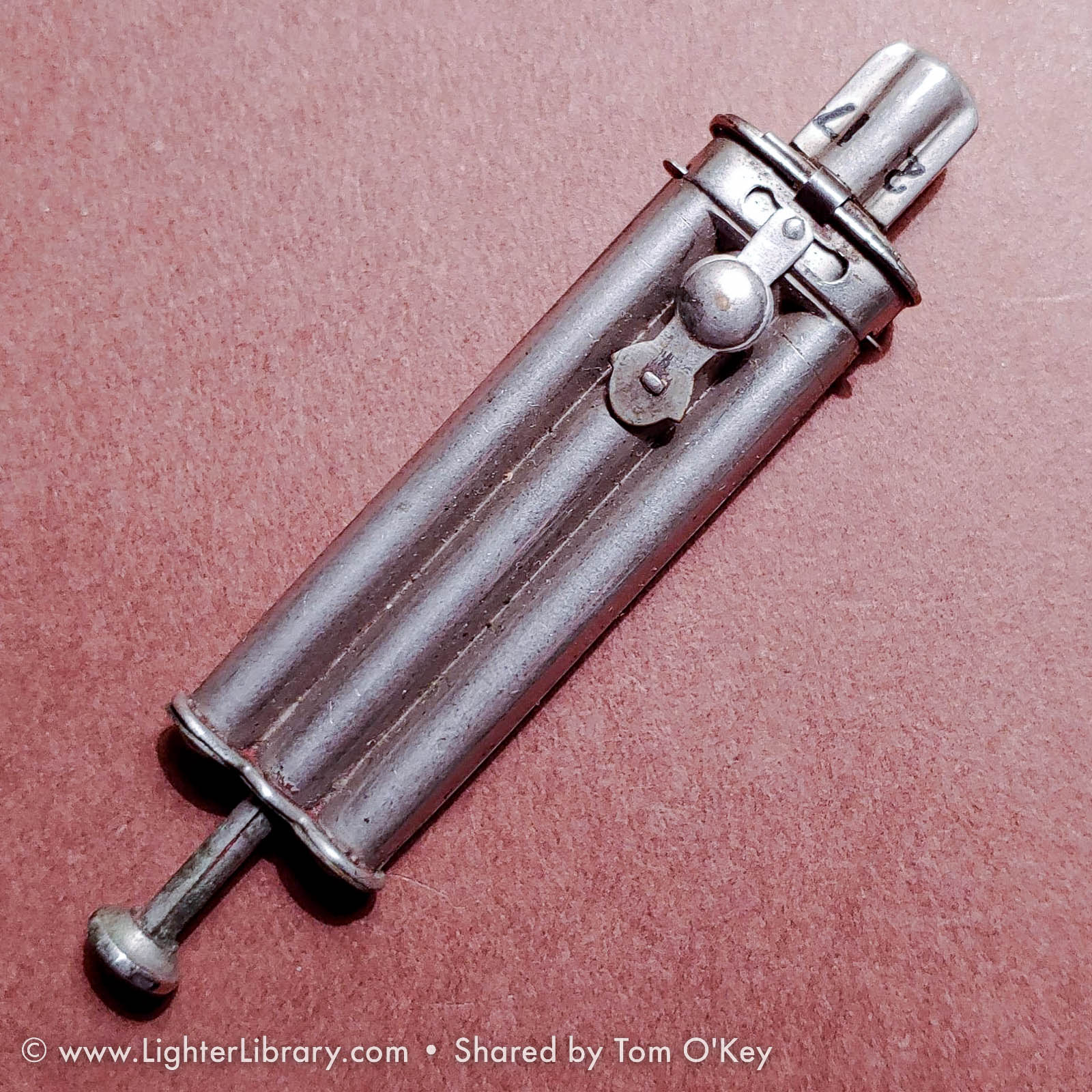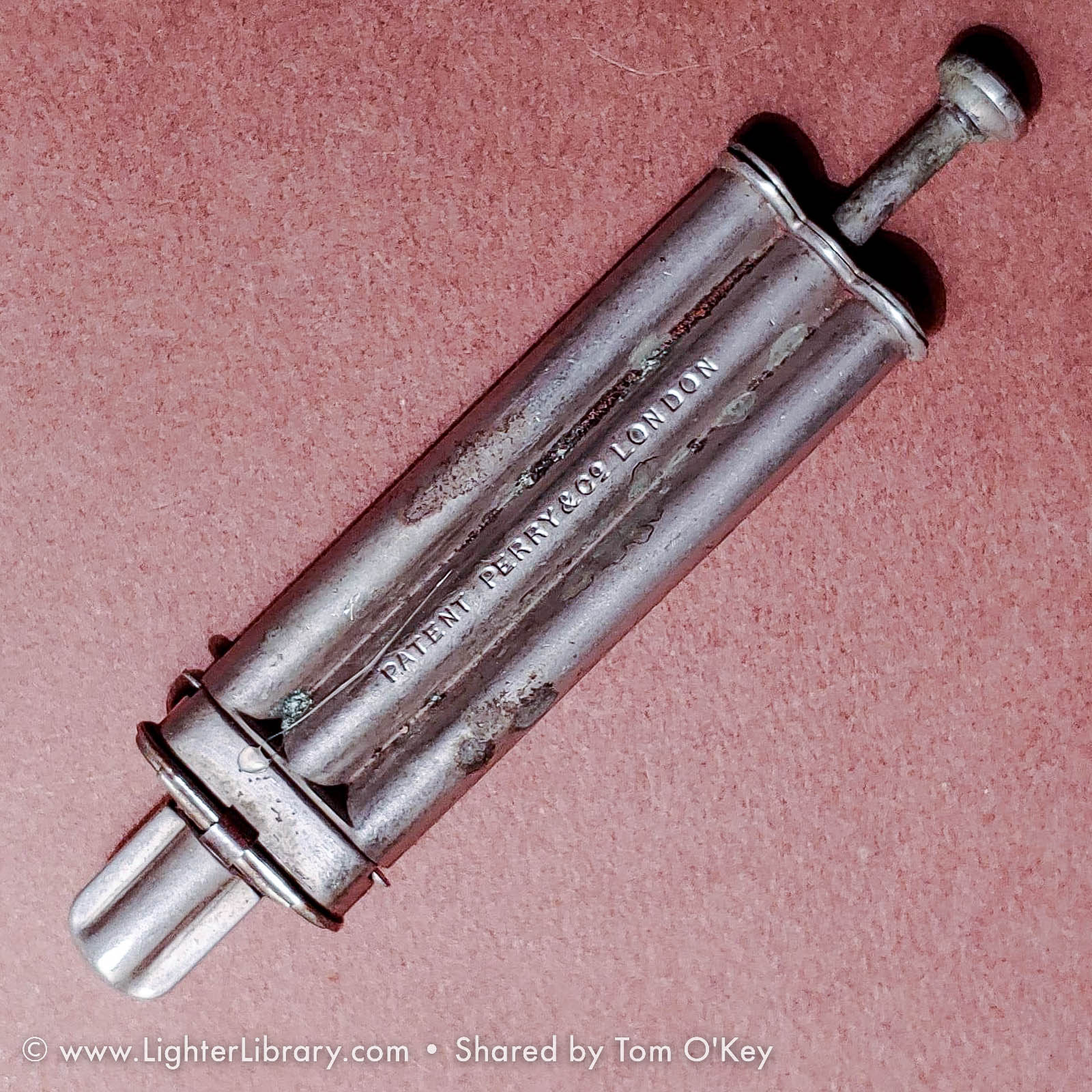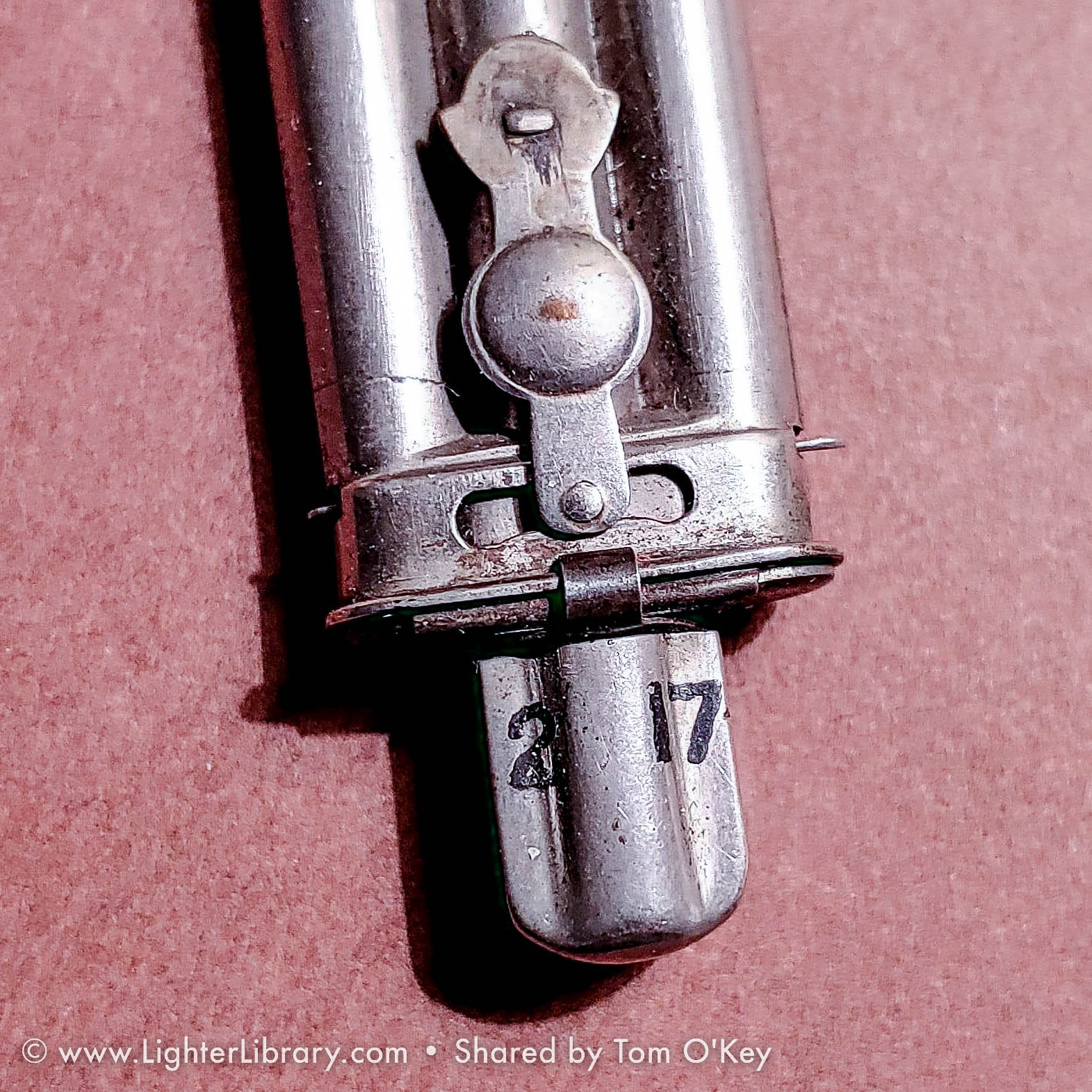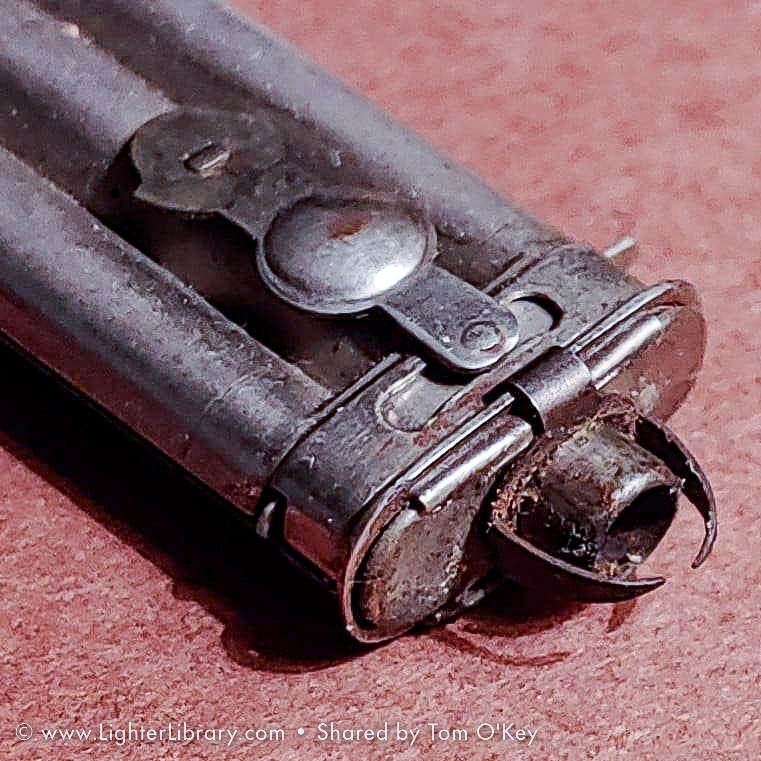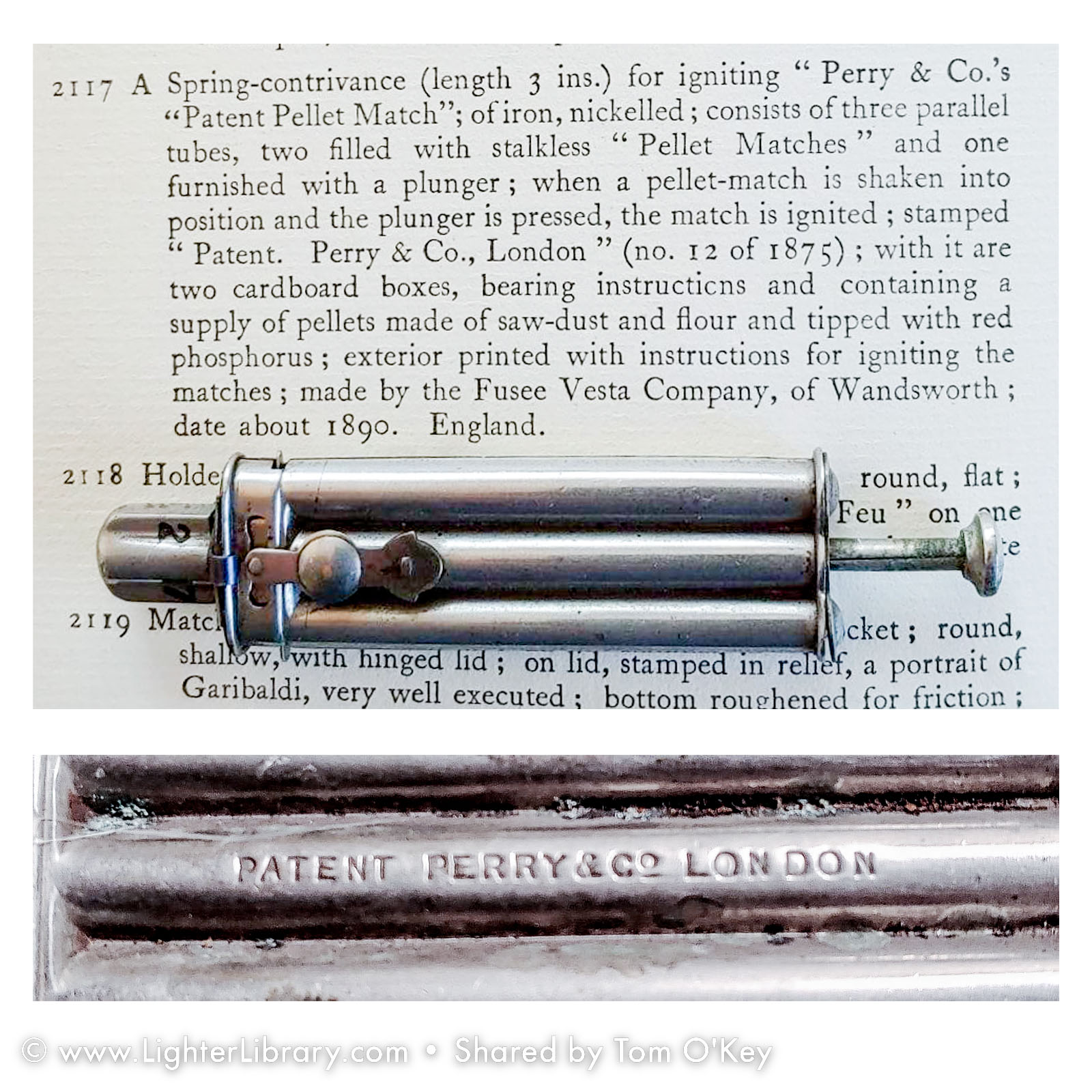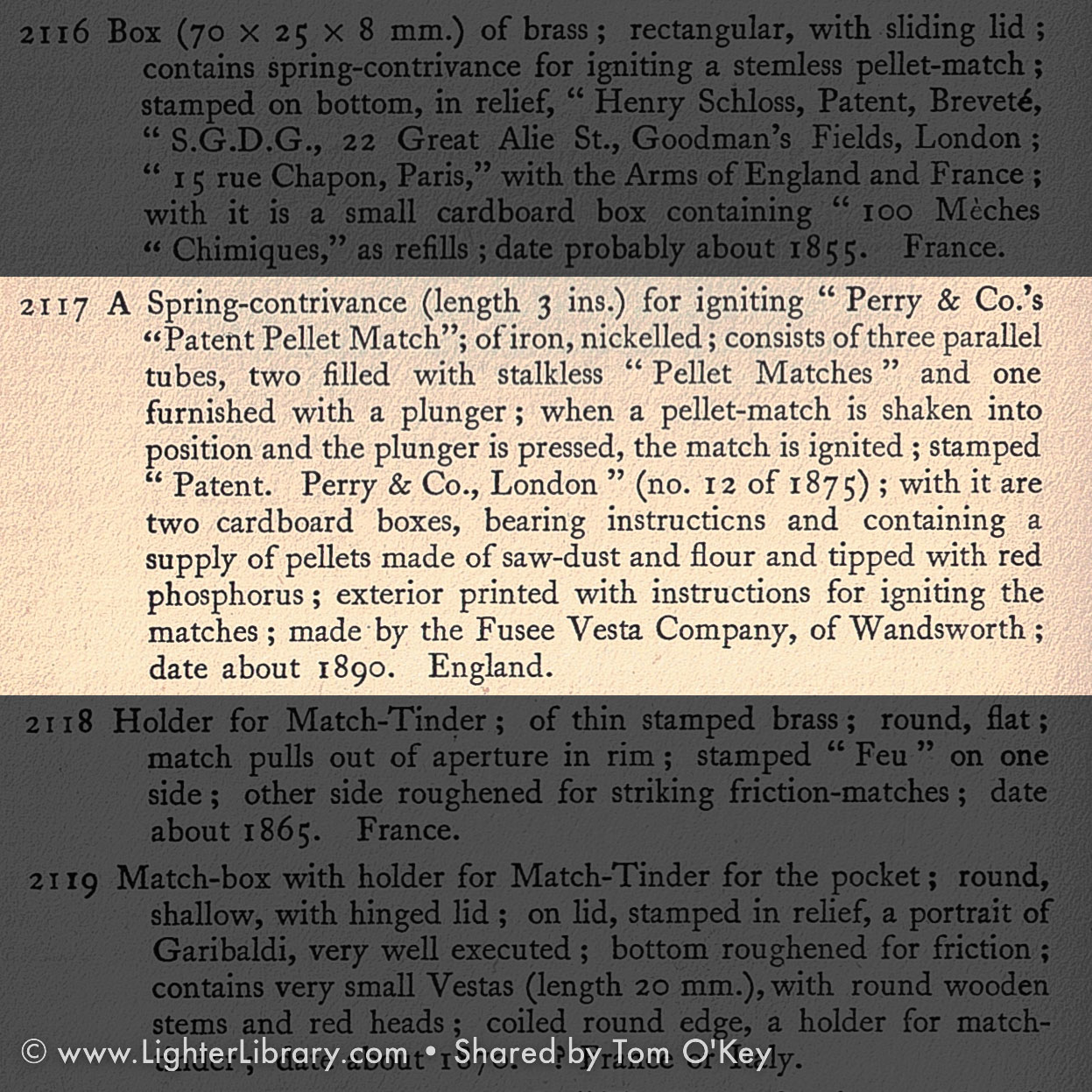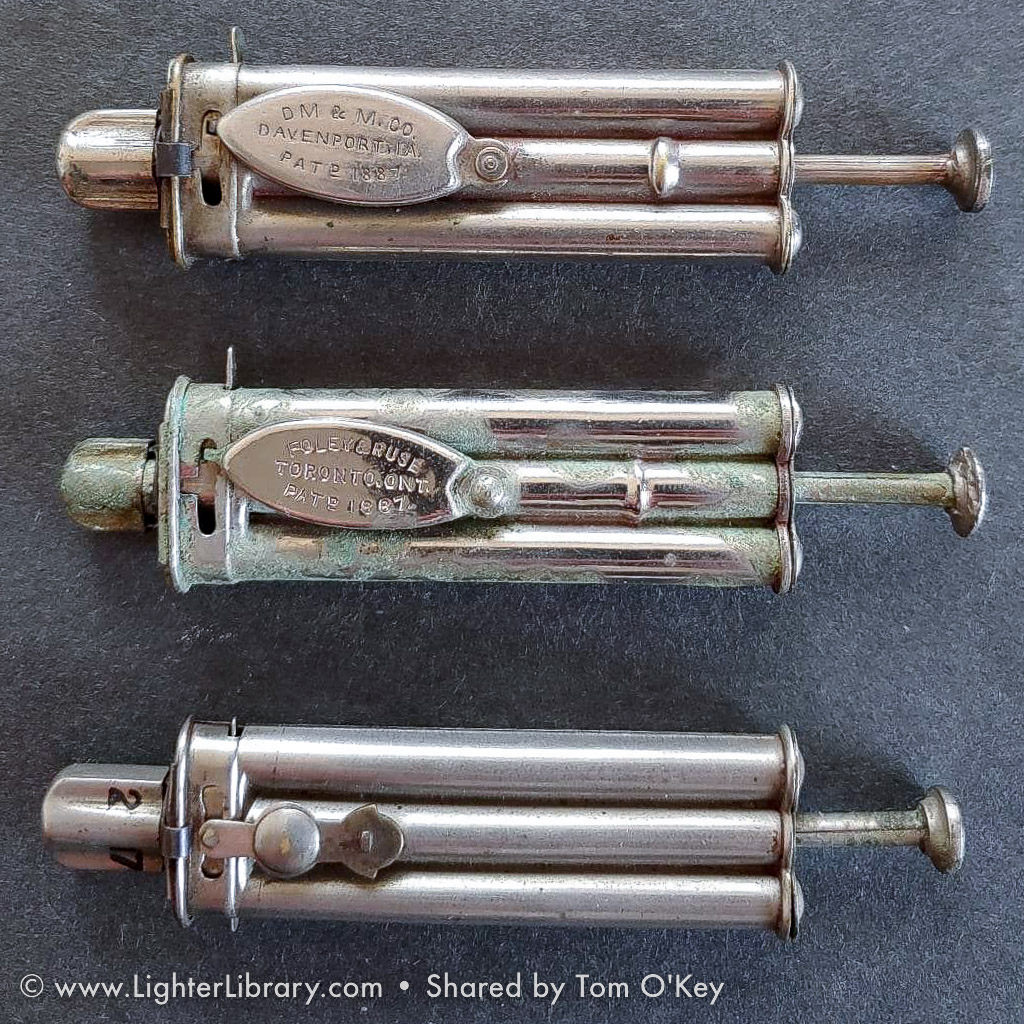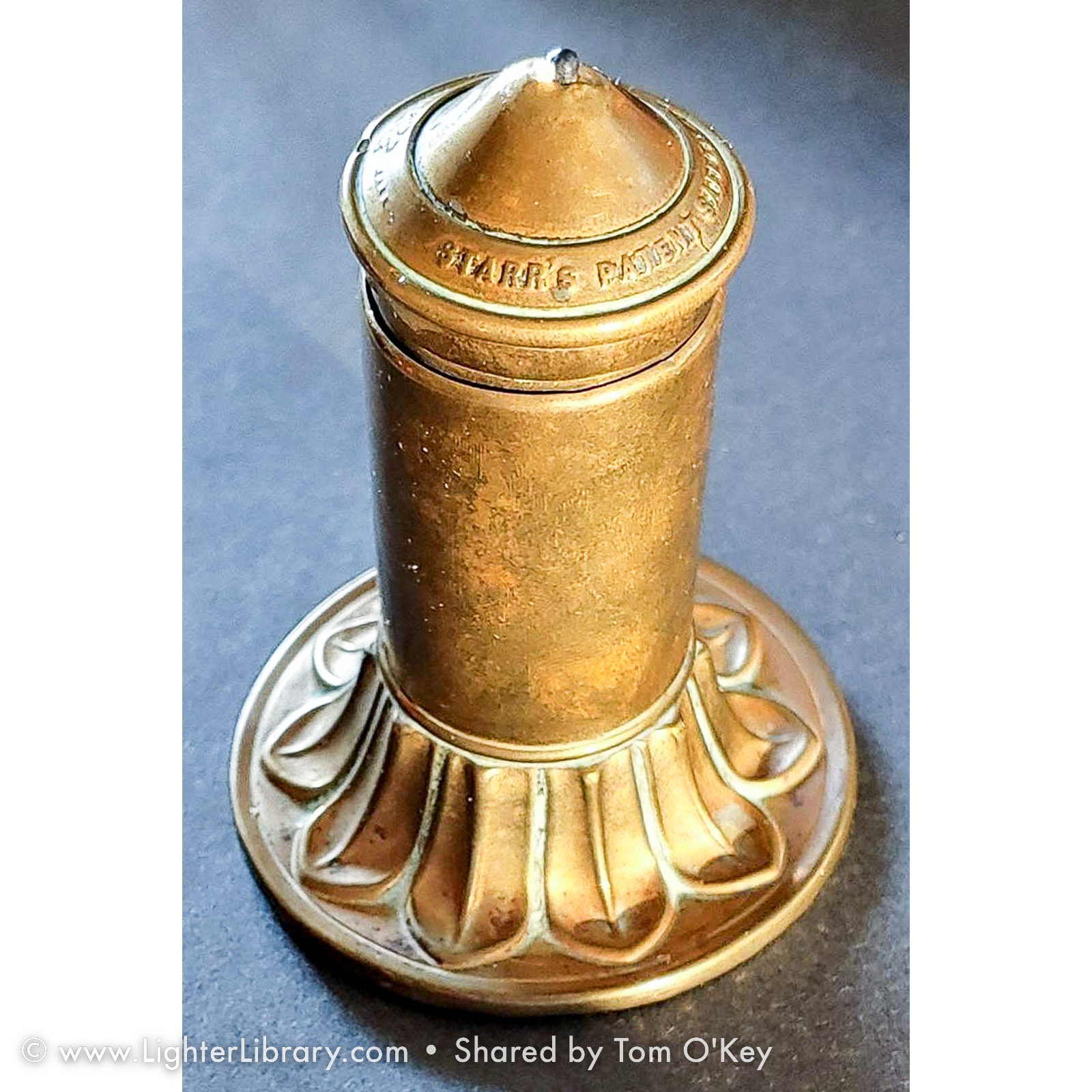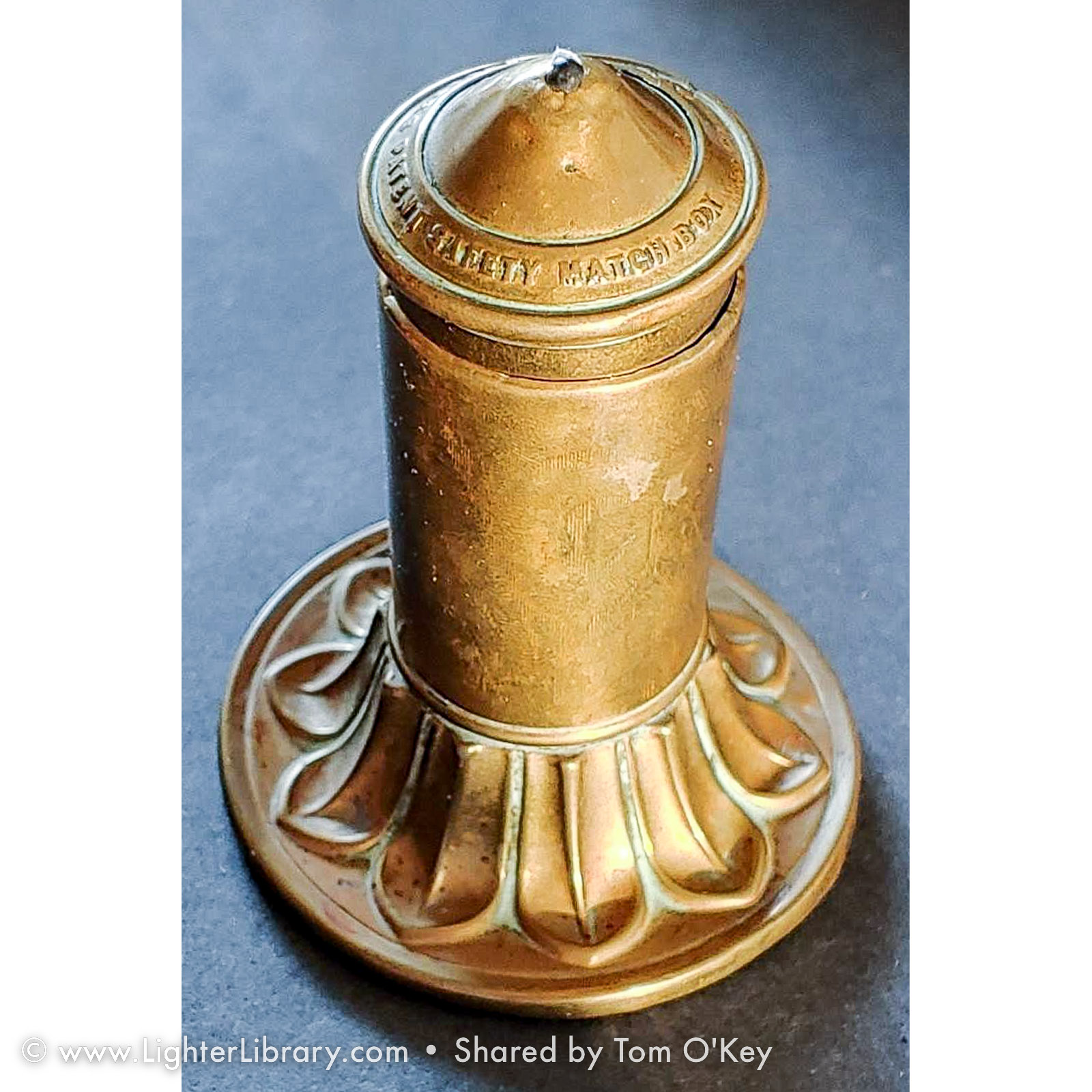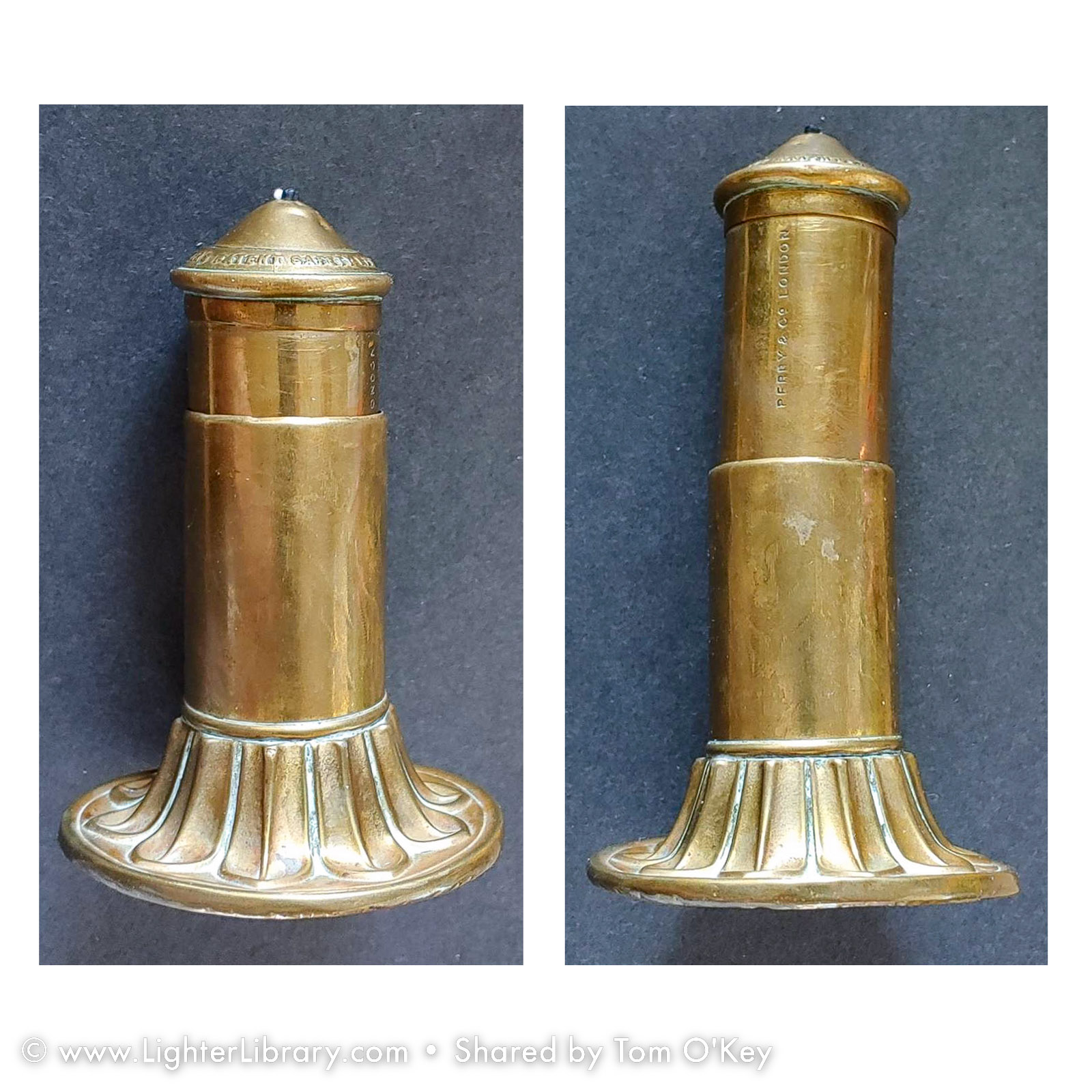Perry & Co.
London, England (GBR)
According to the article in Wikipedia, Perry & Company was a British company that was founded in Birmingham in 1824 by James Perry who was dissatisfied with writing products of the day, he began business where the key products were ink pens of superior quality.
Smoker's accessories were another category of products that survive in rare numbers in lighter collections today, that have pieces where friction match ignition systems are included.
Two lighters are known today, that show Perrry manufactured and marketed these unique innovations. Both examples are friction match inventions. One example, (catalogue number 2117,) was preserved in the Museum collection of the Bryant & May Match Manufacturer's collection of Fire-Making Appliances. The other is a table model that automatically lights a stick match that ejects on demand by lifting and pressing downward motions of the mechanism. This model could be used as a "go to bed" light where the match would remain standing in the vessel while burning in the conventional manner.
The pocket model is a small mechanical marvel where moving parts shuttle match pellets in a form similar to tiny bullet heads, they look like match heads without sticks. The supply of matches is shared between two parallel tubes that act as magazines to store more than a dozen lights, each fed in alternating order of one from the left, then one from the right. The device ejects one at a time at the pressing of the plunger. The pellet pops out of a central opening into the waiting metal tangs that grip and ignite the match into flame. Once burned up, it would be disposed of in readiness for another light, the little protective cap replaced until next time.
The original patent dated January 1, 1875, shows a different model where a single magazine tube is incorporated, but this design is unknown as a physical example, today. Only the patent description gives any hint of its invention. This is much the same as seen in the development of a similar innovation in lighter design as with the Foley and Ruse pellet match lighter that is reasonably well acquainted to lighter collectors around the world.
It is obvious that the Perry patent predates that one granted to Foley and Ruse by more than a decade. Similarities lead to the thought that the later innovations were more than likely influenced by the Perry design, yet different enough to make them easily distinguishable from one another.
The Perry model shown is the same example from the B&M collection, now in a private collection. The table model is in this collection, as well. Both are estimated to date to the later part of the 1870's. (Tom O'Key)



